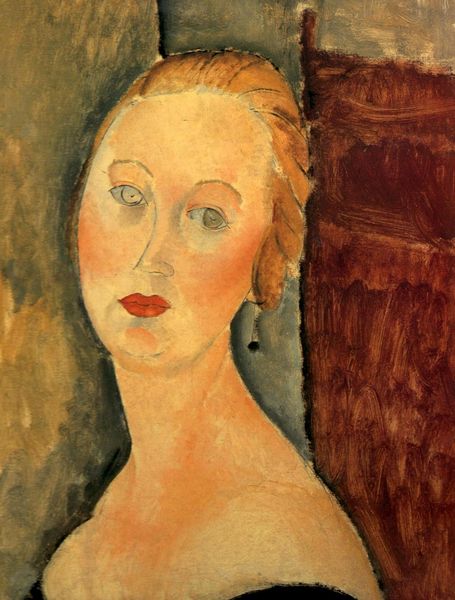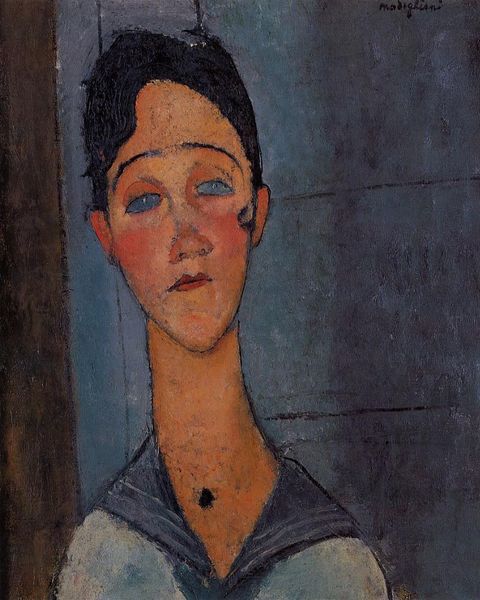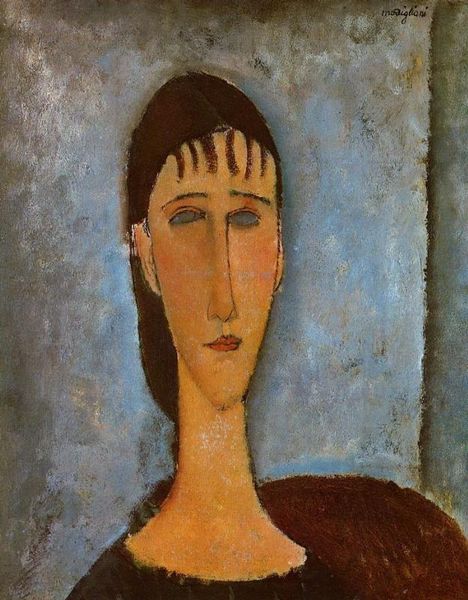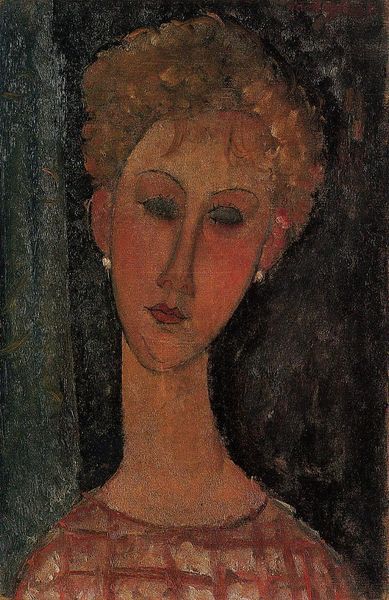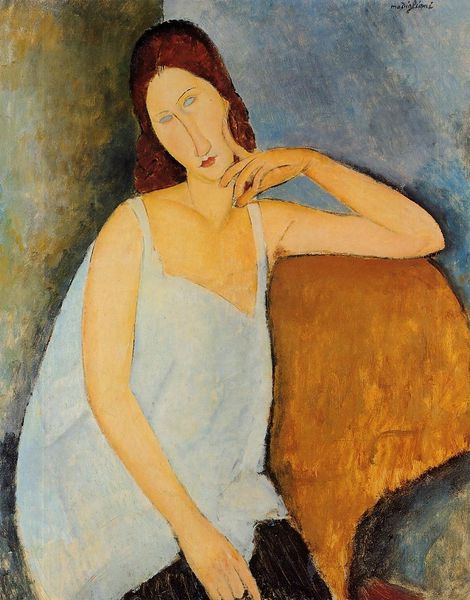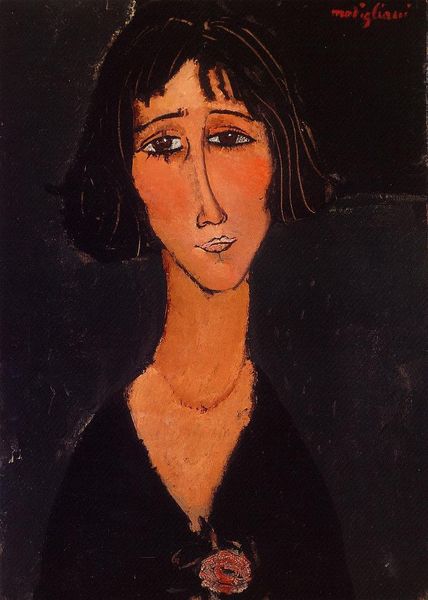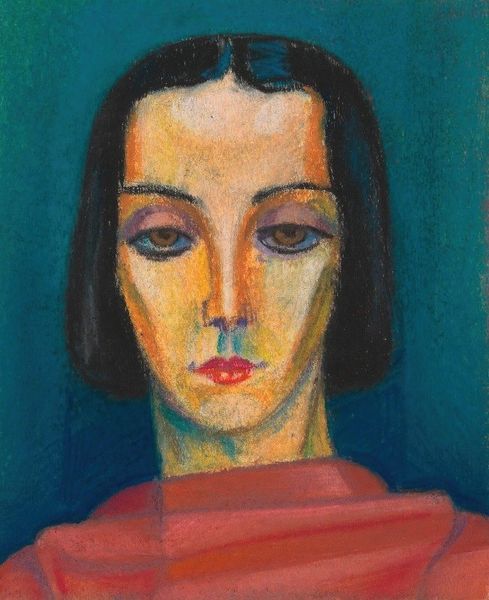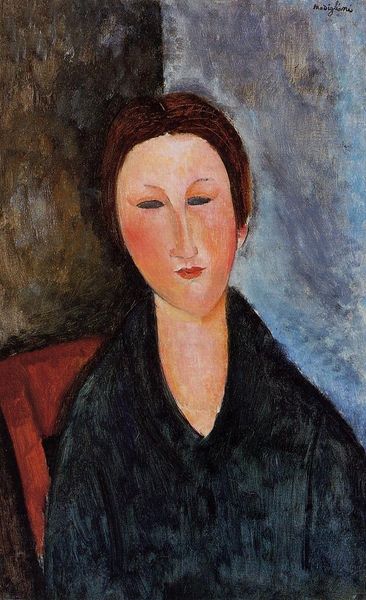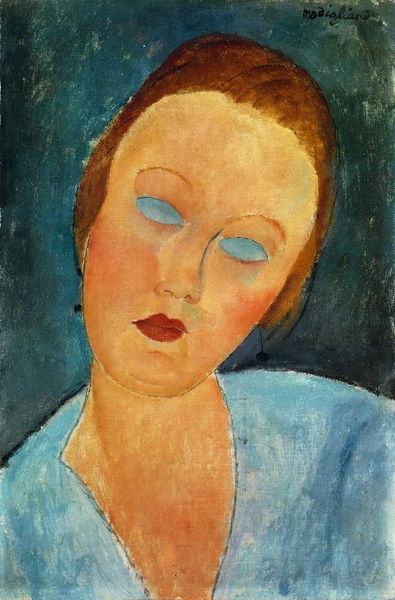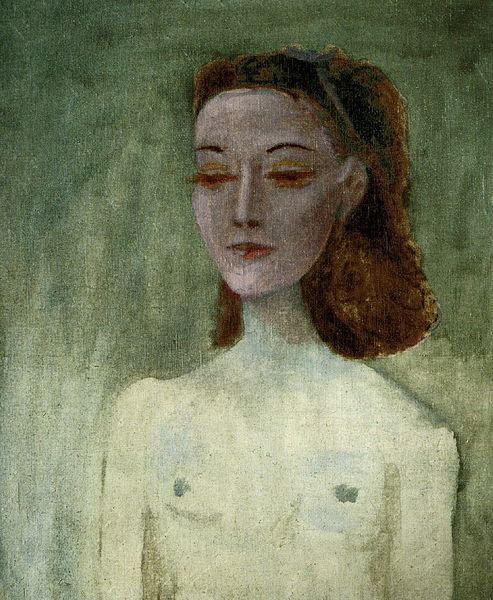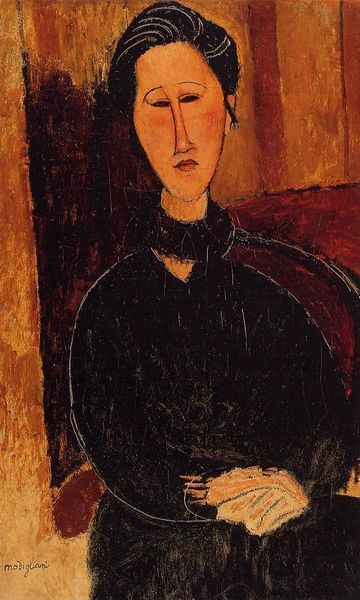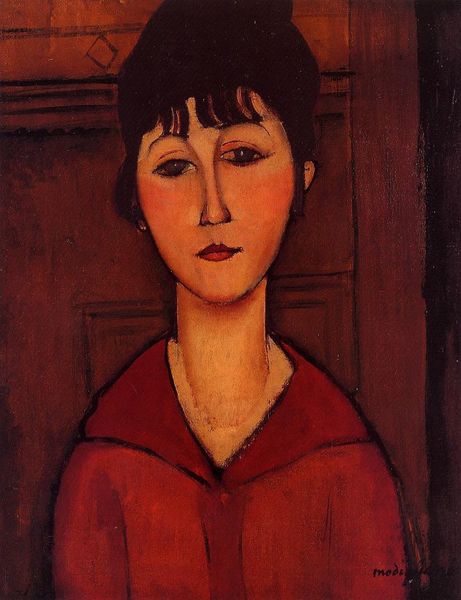
painting, oil-paint, impasto
#
portrait
#
painting
#
oil-paint
#
oil painting
#
impasto
#
italian-renaissance
#
modernism
Copyright: Public domain
Editor: Here we have Modigliani’s "The Singer from Nice," painted in 1919 using oil on canvas. It strikes me immediately with a melancholic feel, almost as if she's lost in thought. What do you see when you look at this piece? Curator: It hums with a quiet intensity, doesn’t it? For me, it’s like peering through a smoky jazz club window in post-war Paris. Those almond eyes, void of pupils – they aren't vacant, no; they're brimming with untold stories. Notice how he simplifies her form, elongates the neck, harking back to Renaissance ideals, yet distorts everything just enough to keep it fiercely modern. Does that contrast strike you at all? Editor: It does! It's like he's honoring tradition while breaking free. What about the colours? I noticed the limited palette makes it more expressive in a way. Curator: Exactly! The muted tones force you to focus on the essence. Think of it: she’s "The Singer from Nice." Nice is sun-drenched, vibrant. But Modigliani chooses instead dusky reds and shadows. Was she singing of heartbreak, perhaps? Or was Nice not all that nice to sing about? That red curtain in the back: stage curtain or blood-red wound? Editor: I didn't even consider that! Now it feels like he's layering the emotion itself. Curator: Indeed, and isn't that the thrill of Modigliani? He captures not just a likeness but a whisper of the soul. Art as a vessel for the intangible, if you will. I feel he wasn’t just painting what he saw, but something within himself as well. It resonates because, don't we all sing our own version of the blues sometimes? Editor: I'm definitely walking away with a richer appreciation for Modigliani and his portraits. It's more than just a picture; it's an echo of emotion. Curator: Precisely! That’s the music in the painting and perhaps the secret of being human too!
Comments
No comments
Be the first to comment and join the conversation on the ultimate creative platform.

